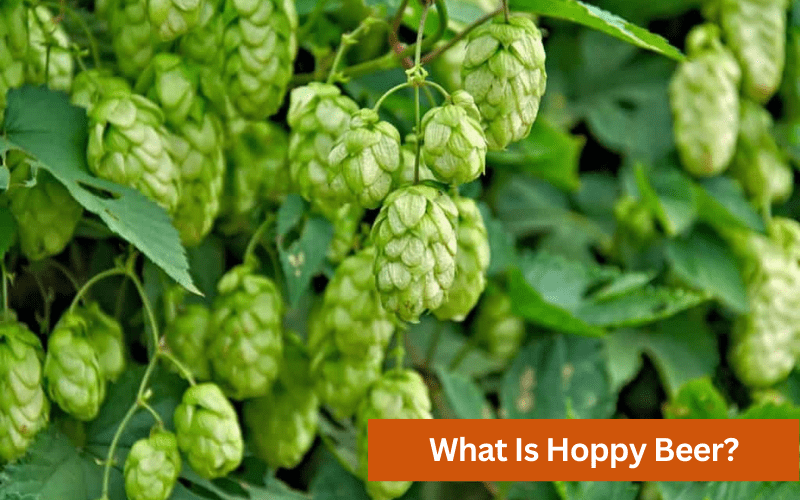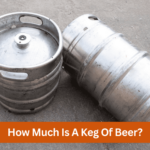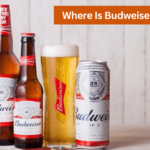Imagine taking a sip of a cold, crisp beer and being hit with a bold, bitter flavor that lingers on your tongue. That’s the experience of drinking a hoppy beer. As a beer enthusiast, I’ve learned to appreciate the complexity and depth that hops bring to a beer. But what is hoppy beer, exactly? It’s more than just a buzzword in the craft beer world. Hoppy beers are characterized by their pronounced bitterness, complex aroma, and unique flavor profile. They’re beloved by many beer drinkers and have become a staple in the world of craft beer. In this article, we’ll dive into the answer of what is hoppy beer and everything about this beer to help you better understand this popular style of beer.
What Are Hops?
Hops are flowers of the Humulus lupulus plant that are used as a key ingredient in brewing beer. They are a type of climbing perennial plant that can grow up to 20 feet in height and are primarily cultivated in countries like the United States, Germany, and the Czech Republic.
Hops serve several purposes in the brewing process, including balancing the sweetness of the malt, adding bitterness, and imparting aroma and flavor to the beer. The specific type of hop used can greatly influence the final flavor and aroma of the beer.
There are many different types of hops, each with its own unique characteristics. Here are some of the most popular hop varieties used in brewing:
- Cascade – This is one of the most popular hop varieties used in American brewing. It has a floral, citrusy flavor and aroma, and is often used in pale ales and IPAs.
- Chinook – Chinook hops have a high alpha acid content, which makes them ideal for use in bittering. They have a piney, spicy flavor and aroma, and are often used in IPAs and other hop-forward beers.
- Citra – Citra hops have a fruity, tropical flavor and aroma, with notes of grapefruit and passionfruit. They are a relatively new hop variety, and are often used in New England IPAs and other juicy, hazy beers.
- Hallertau – Hallertau hops are a classic German hop variety, known for their delicate, floral flavor and aroma. They are often used in lagers and other German-style beers.
- Saaz – Saaz hops are another classic hop variety from the Czech Republic. They have a spicy, herbal flavor and aroma, and are commonly used in Pilsners and other Czech-style lagers.
- Simcoe – Simcoe hops have a complex flavor and aroma, with notes of pine, citrus, and earthiness. They are often used in American-style IPAs and other hop-forward beers.
- Tettnang – Tettnang hops are another classic German hop variety, known for their spicy, floral flavor and aroma. They are often used in lagers and other German-style beers.
Overall, the type of hop used in a beer can greatly impact its flavor and aroma. Brewers carefully choose their hops to create the desired flavor profile for each beer they brew.
What Is Hoppy Beer?
What are hoppy beers? Hoppy beers are beers that have a pronounced bitterness, flavor, and aroma from the addition of hops during the brewing process. Hops are a key ingredient in beer-making and are responsible for balancing the sweetness of the malt and adding complexity to the beer. The amount of hops used, the timing of hop additions, and the specific hop varieties used all contribute to the overall level of hoppiness in a beer.
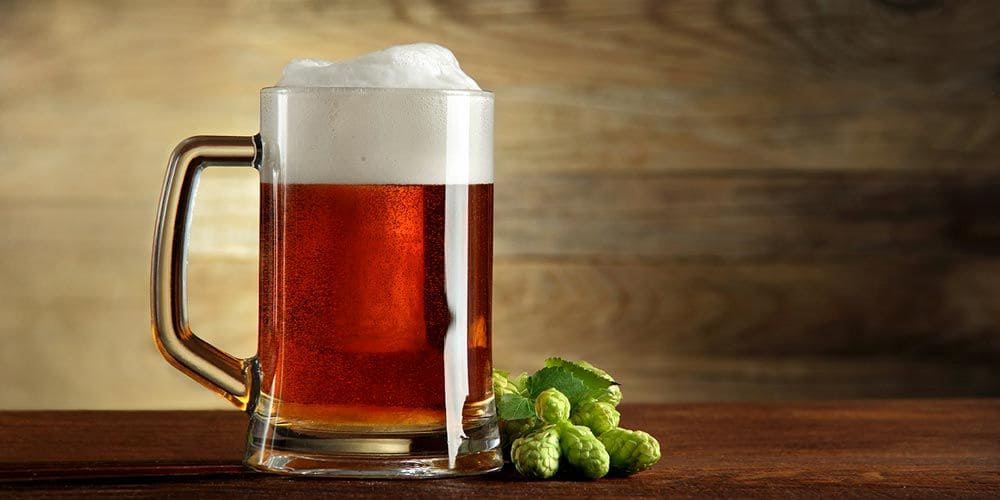
What Makes a Beer Hoppy?
To make a beer hoppy, brewers use a combination of ingredients and techniques, including:
- Hop varieties: Hops are the main ingredient that make a beer hoppy. Different hop varieties have unique characteristics that can contribute to the overall level of bitterness, flavor, and aroma in the beer.
- Amount of hops used: The amount of hops used in a beer can greatly impact its hoppy flavor and bitterness. More hops typically result in a more pronounced hoppy flavor.
- Timing of hop additions: When hops are added during the brewing process can also affect the flavor and aroma of the beer. For example, adding hops earlier in the boil will result in more bitterness, while adding them later will enhance their flavor and aroma.
- Types of malt: The type of malt used in the brewing process can affect the overall flavor and body of the beer, which can complement or balance out the hoppy flavors.
- Yeast strains: Different yeast strains can contribute to the overall flavor profile of the beer, which can either complement or compete with the hoppy flavors.
- Water profiles: The mineral content of the water used in brewing can affect the overall flavor and body of the beer, which can also complement or balance out the hoppy flavors.
- Adjuncts: Adjuncts are any additional ingredients used in brewing, such as fruit, spices, or sugars. These can complement or enhance the hoppy flavors in the beer.
That’s why making a beer hoppy requires careful selection and balancing of ingredients and techniques to create a complex and enjoyable flavor profile.
Brewing Techniques
The brewing techniques used to create hoppy beers can greatly affect their flavor, aroma, and bitterness. Here are some popular techniques used in hoppy beer brewing:
- Dry hopping: Dry hopping involves adding hops to the beer after primary fermentation is complete. This technique enhances the hop aroma and flavor without adding additional bitterness.
- Hop bursting: Hop bursting involves adding a large amount of hops at the beginning of the brewing process to create a pronounced hop flavor, while minimizing the bitterness.
- Hopback: A hopback is a device used to add hops during the brewing process to create a pronounced hop aroma and flavor.
- Hop steeping: Hop steeping involves adding hops to hot water or wort outside of the brewing kettle, which creates a hop tea that can be added to the beer during fermentation.
- Mash hopping: Mash hopping involves adding hops directly to the mash, which can add a subtle hop flavor and aroma to the beer.
- First wort hopping: First wort hopping involves adding hops to the boiling wort before the boil begins, which can create a smoother bitterness and enhance the hop flavor.
Each of these techniques can be used to create a unique hoppy beer profile, depending on the desired level of bitterness, flavor, and aroma. Hoppy beers can also be created using a combination of these techniques to achieve a specific flavor profile.
What Beers Are Hoppy?
Here are some popular types of hoppy beers:
- India Pale Ale (IPA): The IPA is a hop-forward beer style that originated in England. It has a high level of bitterness and a pronounced hop flavor and aroma, with citrusy, piney, or floral notes.
- Double IPA (DIPA): The Double IPA, or Imperial IPA, is a stronger and more hoppy version of the IPA. It has a higher alcohol content and a more intense hop flavor and bitterness.
- Session IPA: The Session IPA is a lower alcohol and less bitter version of the IPA, with a more balanced hop profile.
- New England IPA (NEIPA): The New England IPA, or Hazy IPA, is a newer style of IPA that has gained popularity in recent years. It has a hazy appearance and a juicy, tropical hop flavor and aroma.
- Belgian IPA: The Belgian IPA is a hybrid style that combines the hoppy bitterness of an American IPA with the spicy and fruity notes of a Belgian-style beer.
- Black IPA: The Black IPA, or Cascadian Dark Ale, is a hoppy beer with a dark color and roasted malt flavors that complement the hop bitterness and flavor.
- Red IPA: The Red IPA is a hoppy beer with a reddish hue, created by adding specialty malts to the brewing process. It has a balanced hop profile and a malty sweetness.
Each of these hoppy beer styles has a unique flavor profile, created by the type and amount of hops used, as well as other ingredients and brewing techniques.
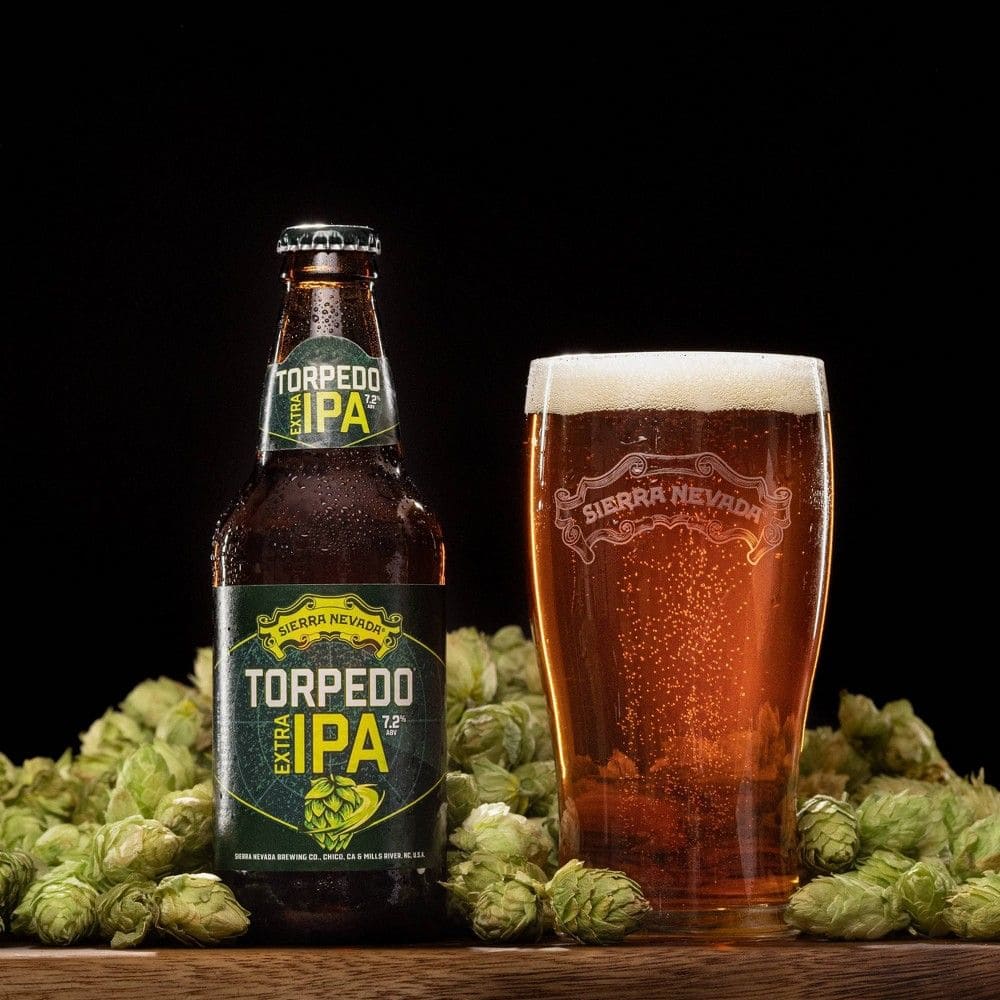
Which beer is most hoppy?
- Pliny the Younger: This is a triple IPA brewed by Russian River Brewing Company and is often cited as one of the most hoppy beers in the world. It has a high bitterness level and a complex hop flavor and aroma.
- Heady Topper: This is an American Double IPA brewed by The Alchemist Brewery in Vermont. It has a high level of bitterness and a strong hop flavor and aroma, with notes of grapefruit and pine.
- Hopslam Ale: This is a Double IPA brewed by Bell’s Brewery in Michigan. It has a high bitterness level and a complex hop flavor and aroma, with notes of honey, grapefruit, and floral hops.
- Enjoy By IPA: This is a series of IPAs brewed by Stone Brewing in California. They are brewed with a specific expiration date to ensure maximum freshness and hop flavor and aroma.
- Dogfish Head 120 Minute IPA: This is an American Double IPA brewed by Dogfish Head Brewery in Delaware. It has a high alcohol content and a strong hop flavor and aroma, with notes of caramel, toffee, and pine.
What beers are more hoppy?
- Stone IPA – This is an American IPA brewed by Stone Brewing in California. It has a high level of bitterness and a strong hop flavor and aroma, with notes of citrus and pine.
- Sierra Nevada Pale Ale – This is an American Pale Ale brewed by Sierra Nevada Brewing Company in California. It has a balanced hop profile and a medium bitterness level, with notes of pine and grapefruit.
- Two Hearted Ale – This is an American IPA brewed by Bell’s Brewery in Michigan. It has a high bitterness level and a complex hop flavor and aroma, with notes of pine, citrus, and floral hops.
- Sculpin IPA – This is an American IPA brewed by Ballast Point Brewing Company in California. It has a high bitterness level and a strong hop flavor and aroma, with notes of grapefruit and pine.
- Green Flash West Coast IPA – This is an American IPA brewed by Green Flash Brewing Company in California. It has a high level of bitterness and a complex hop flavor and aroma, with notes of pine, citrus, and tropical fruit.
What is the least hoppy beer?
The least hoppy beer is typically a beer style that is not known for its hoppy characteristics, such as a lager or a wheat beer. For example, a classic American lager like Budweiser or Coors would be considered one of the least hoppy beers, with a low bitterness level and little hop flavor or aroma.
Is Corona a hoppy beer?
No, Corona is not considered a hoppy beer. It is a light lager beer that has a low bitterness level and a mild flavor profile. It is known for its refreshing and easy-to-drink qualities, rather than its hoppy characteristics.
Is Guinness A hoppy?
Guinness is not a hoppy beer. It is an Irish dry stout that is brewed with roasted barley, which gives it a distinct flavor profile with notes of coffee and chocolate, but very little hop flavor or aroma.
Are stouts hoppy?
Stouts are a type of beer that can be hoppy, but not all stouts are hoppy. Stouts are known for their roasted malt flavors and creamy texture, with a varying level of hop flavor and bitterness depending on the specific style and recipe.
Is lager a hoppy?
Lagers can have varying levels of hop bitterness and flavor, depending on the specific style and recipe. Some lagers, such as Pilsners, can be quite hoppy and feature a crisp, refreshing bitterness. Other styles, such as American lagers, tend to have a lower bitterness level and a focus on the light, easy-to-drink qualities.
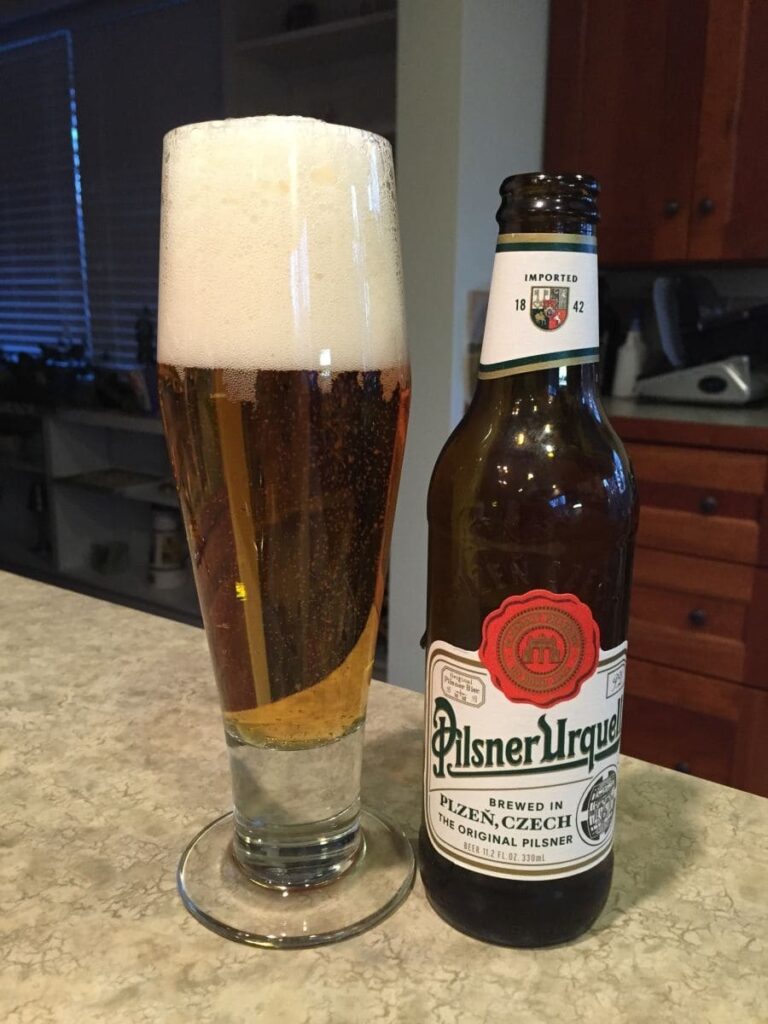
How to Tell If a Beer Is Hoppy
There are some ways you can use to know if a beer is hoppy:
- Look at the color: Hoppy beers are often lighter in color, ranging from pale straw to golden amber. This is because the malt used in brewing a hoppy beer is usually lighter in color, which allows the hop flavor and aroma to stand out.
- Smell the beer: Hoppy beers have a distinct hoppy aroma, which can range from floral and citrusy to piney and resinous. If you smell a beer and detect a strong hop aroma, it is likely to be hoppy.
- Taste the beer: The most obvious way to tell if a beer is hoppy is by its taste. Hoppy beers have a pronounced bitterness, which can range from mild to intense, depending on the style of beer. They also have a hoppy flavor, which can range from citrusy and fruity to piney and earthy.
- Read the label: Many breweries will list the IBU (International Bitterness Units) on the label of the beer. This is a measure of the bitterness in the beer, with higher numbers indicating a more hoppy beer.
- Ask the bartender or server: If you are unsure whether a beer is hoppy or not, ask the bartender or server. They should be knowledgeable about the beers on tap and can provide you with information on the beer’s hop content and flavor profile.
By using these methods, you can tell if a beer is hoppy and make an informed decision on which beer to choose based on your personal taste preferences.
What Does Hoppy Beer Taste Like?
Hoppy beer is characterized by its distinctive taste of bitterness, which is derived from the use of hops during the brewing process. The specific taste can vary depending on the type of hops used, the amount of hops used, and the brewing technique employed.
- Bitterness: Hoppy beers have a pronounced bitterness that can range from mild to intense, depending on the style of beer. This bitterness is a result of the alpha acids in the hops used in brewing.
- Hop flavor: Hoppy beers also have a distinct hop flavor, which can range from citrusy and fruity to piney and earthy. The specific hop flavors will depend on the type of hops used in the brewing process.
- Aroma: Hoppy beers have a strong hop aroma that can be floral, fruity, piney, or resinous. This aroma is a result of the volatile compounds in the hops.
- Malt sweetness: Hoppy beers can also have a slight malt sweetness that helps balance out the bitterness and hop flavors.
- Dryness: Hoppy beers often have a dry finish, which can be attributed to the high bitterness and low residual sugar content.
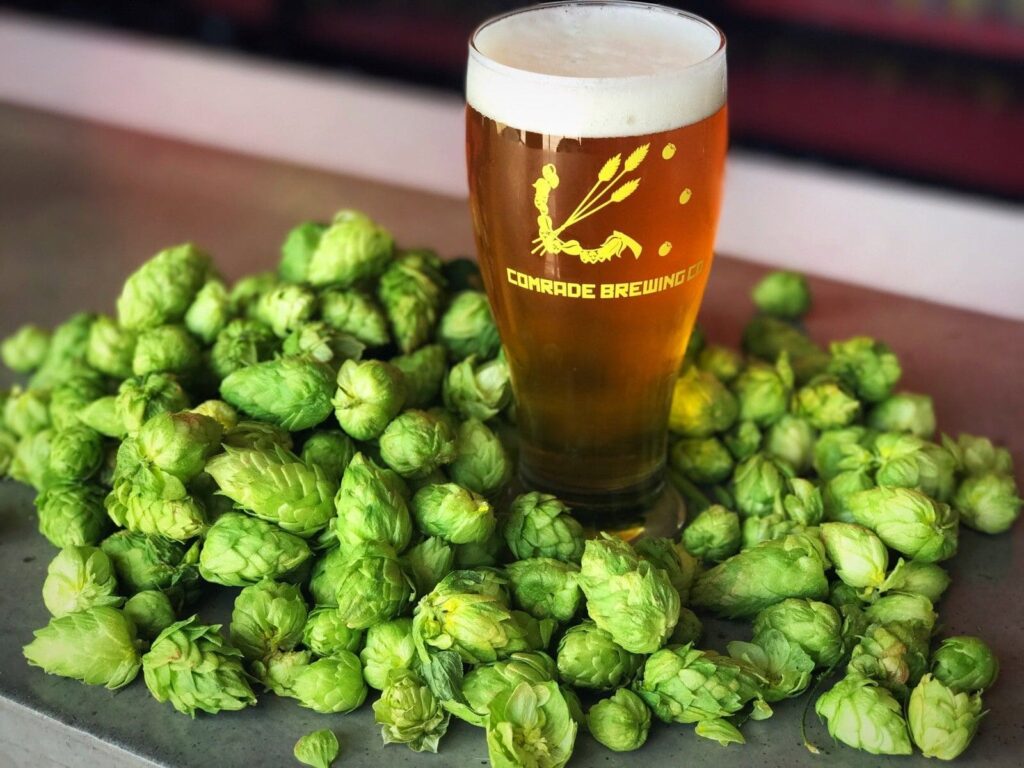
How to Taste Hoppy Beer
Here are some steps to properly taste hoppy beer:
- Look at the beer: Take a moment to examine the color and clarity of the beer. Note any carbonation or head that may be present.
- Smell the beer: Take a deep breath and smell the beer. Note any hop aromas, such as citrus or pine, as well as any malt or yeast aromas.
- Take a sip: Take a small sip of the beer and let it sit on your tongue for a moment. Note the initial flavors, such as bitterness, hop flavor, malt sweetness, and any other flavors that may be present.
- Swirl the beer: Swirl the beer in your mouth to fully coat your tongue and allow the flavors to mix and develop.
- Note the finish: After swallowing the beer, note any lingering flavors or aftertastes. Hoppy beers often have a dry finish and a lingering bitterness.
- Take another sip: To fully appreciate the complexity of the beer, take another sip and note any new flavors or aromas that you may have missed before.
- Evaluate the beer: Consider the overall taste and balance of the beer. Does the bitterness and hop flavor complement the malt sweetness? Is the beer well-balanced and enjoyable to drink?
Is Hoppy Beer Good for You?
Besides knowing what is hoppy beer, it’s necessary to understand the benefits of this type of beer. Moderate consumption of hoppy beer, like most alcoholic beverages, can have some health benefits. However, it’s important to note that excessive consumption can lead to negative health effects, and any potential benefits are outweighed by the risks associated with heavy drinking. Here are some potential health benefits of moderate consumption of hoppy beer:
- Reduced risk of heart disease: The flavonoids in beer, particularly in hoppy beers, have been shown to have antioxidant and anti-inflammatory properties that can help reduce the risk of heart disease.
- Improved bone health: The silicon content in beer, which is higher in hoppy beers, has been linked to improved bone density and reduced risk of osteoporosis.
- Lower risk of diabetes: Moderate beer consumption has been associated with a lower risk of developing type 2 diabetes.
- Reduced stress and anxiety: Drinking moderate amounts of beer can help reduce stress and anxiety levels, which can have a positive impact on overall health and well-being.
- Improved digestion: Beer, including hoppy beer, contains compounds that can stimulate the production of stomach acid and enzymes, which can aid in digestion.
- Reduced risk of dementia: The flavonoids in beer have been linked to improved cognitive function and a reduced risk of dementia.
These potential health benefits are associated with moderate consumption, which is typically defined as one drink per day for women and two drinks per day for men.
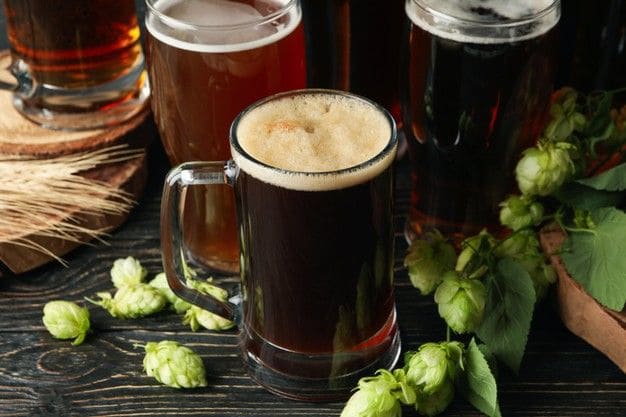
Is Hoppy Beer Bad for You?
Hoppy beer, like any alcoholic beverage, can be bad for you if consumed excessively or if you have certain health conditions. Here are some potential negative effects of consuming hoppy beer:
- Increased risk of alcoholism: Excessive consumption of hoppy beer or any alcoholic beverage can increase the risk of alcoholism and related health problems.
- Weight gain: Beer, including hoppy beer, is high in calories and can contribute to weight gain if consumed in excess.
- Dehydration: Alcohol is a diuretic, meaning it can cause dehydration if consumed in large amounts, which can lead to headaches, fatigue, and other negative effects.
- Liver disease: Excessive consumption of hoppy beer or any alcoholic beverage can lead to liver disease, including fatty liver, cirrhosis, and liver cancer.
- Increased risk of certain cancers: Excessive consumption of hoppy beer or any alcoholic beverage has been linked to an increased risk of certain cancers, including breast cancer and colorectal cancer.
- Interference with medications: Hoppy beer can interfere with certain medications, including antibiotics and some antidepressants, which can lead to negative health effects.
Do Hoppy Beers Make You Sleepy?
No, hoppy beers do not make you sleepy. While hops are known to have sedative properties, the amount of hops in beer is not enough to make you feel drowsy or sleepy. In fact, the alcohol content in beer is more likely to make you feel sleepy than the hops. However, excessive alcohol consumption can disrupt your sleep patterns and lead to a poor night’s sleep.
Pairing Hoppy Beer with Food
Pairing hoppy beer with food can be a great way to enhance the flavor of both the beer and the food. Here are some general tips for pairing hoppy beer with food:
- Spicy food: Hoppy beers can complement spicy food, such as Indian or Mexican cuisine. The bitterness of the beer can help cut through the heat of the spices, while the hop flavors can enhance the overall flavor profile.
- Salty food: Hoppy beers can also pair well with salty food, such as pretzels or french fries. The bitterness of the beer can help balance out the saltiness of the food.
- Rich or fatty food: Hoppy beers can cut through the richness of fatty or creamy dishes, such as burgers or mac and cheese. The bitterness of the beer can help cleanse the palate and refresh the taste buds.
- Strong cheese: Hoppy beers can pair well with strong or pungent cheeses, such as blue cheese or cheddar. The bitterness of the beer can complement the sharpness of the cheese, while the hop flavors can add complexity to the pairing.
- Grilled or roasted food: Hoppy beers can also pair well with grilled or roasted food, such as barbecue or roasted vegetables. The smoky or charred flavors of the food can complement the hop flavors of the beer, while the bitterness can cut through the richness of the meat or vegetables.
How to Properly Serve Hoppy Beer
Here are some tips for properly serving hoppy beer:
- Temperature: Hoppy beers are best served at a cool temperature, around 45-50°F (7-10°C). This allows the hop flavors and aromas to be more pronounced and the bitterness to be balanced.
- Glassware: Using the proper glassware can enhance the drinking experience of hoppy beer. A tulip glass or an IPA glass with a narrow top can help concentrate the hop aromas and flavors, while a pint glass or a mug can work well for more casual drinking.
- Pouring: When pouring hoppy beer, hold the glass at a 45-degree angle and pour the beer slowly down the side of the glass. This will help create a thick, creamy head that can enhance the hop aromas and flavors.
- Storage: Hoppy beers should be stored in a cool, dark place to protect the hop flavors and aromas from degradation. Exposure to light and heat can cause the hops to break down and result in a stale or skunky flavor.
- Freshness: Hoppy beers are best consumed fresh, as the hop flavors and aromas can fade over time. Look for beers with a “best by” date or check the brewery’s website for recommended freshness guidelines.
By following these tips, you can properly serve hoppy beer and enjoy its unique hop flavors and aromas to the fullest.
FAQs
What is hoppy IPA?
Hoppy IPA is a beer style that is characterized by its high hop content, which provides a pronounced bitterness and hop flavor and aroma. IPA stands for India Pale Ale, which originated in England and was brewed with extra hops and higher alcohol content to survive the long voyage to India.
What is Lagunitas Hoppy Refresher?
Lagunitas Hoppy Refresher is a non-alcoholic, zero-calorie sparkling water beverage that is flavored with hops. It is made by Lagunitas Brewing Company and is a healthy and refreshing alternative to traditional beer or soda.
Is Corona light a hoppy beer?
No, Corona Light is not typically considered a hoppy beer. It is a light, crisp beer that is known for its refreshing taste and light body, with a low hop flavor and bitterness.
Which beers have the lowest IBU?
Beers that have the lowest IBU (International Bitterness Units) are typically light, crisp beers that are not known for their hoppy characteristics. Examples include lagers, pilsners, wheat beers, and blonde ales.
What IBU stand for in beer?
IBU stands for International Bitterness Units, which is a measure of the bitterness in beer. It is calculated by measuring the amount of iso-alpha acids in the beer, which are derived from the hops.
Why IPAs give me diarrhea?
There could be various reasons why IPAs give someone diarrhea, such as lactose intolerance or sensitivity to certain ingredients used in the beer. It is best to consult a medical professional if you are experiencing ongoing digestive issues after drinking beer.
Why do IPAs get me drunk?
IPAs can get someone drunk faster than other beers due to their higher alcohol content and often higher sugar content, which leads to a quicker absorption of alcohol in the bloodstream.
Are hoppy beers only for beer geeks?
No, hoppy beers can be enjoyed by anyone who appreciates the complex and unique flavor profile that hops provide. While hoppy beers may not be everyone’s preferred taste, they are not exclusive to beer geeks.
Can hoppy beers be aged like other beers?
Hoppy beers are not typically aged like other beers, as the hop flavors and aromas can fade over time. They are best consumed fresh to enjoy their unique hop characteristics.
Is Stella Artois hoppy?
Stella Artois is not typically considered a hoppy beer. It is a Belgian pilsner that is known for its crisp, clean taste and subtle hop flavor and bitterness.
Conclusion
In conclusion, after delving deep into the world of what is hoppy beer, it’s clear that they offer a unique and complex flavor experience that is not found in other beer styles. From the distinct aroma to the bitter taste, hoppy beers are a testament to the creativity and artistry of brewers who have mastered the craft of beer making. Personally, I have come to appreciate hoppy beers after trying different varieties and learning about the brewing process. What is hoppy beer? It’s an adventure that every beer enthusiast should take. So, go out and try a hoppy beer for yourself, and I guarantee you’ll be surprised by the depth and complexity of flavors that you’ll encounter.
I’m Chen Mina, from Vol de Nuit, who has a special passion for bartending, especially mixing wine, beer, and cooktail. Here you will find content about alcoholic beverages, I will bring you knowledge that few people know about this drink.

